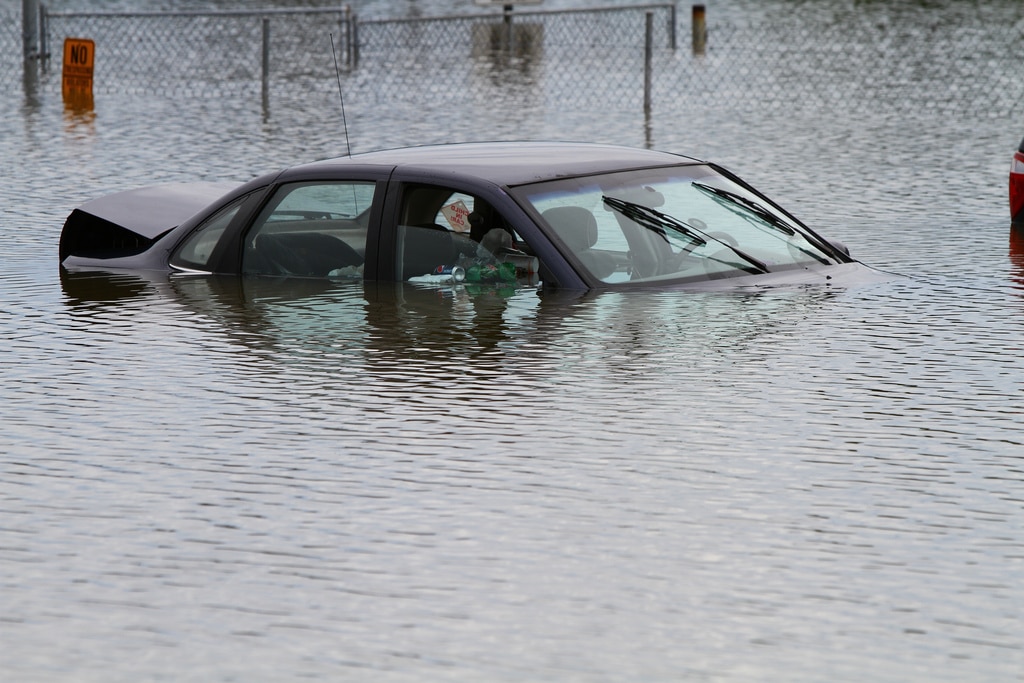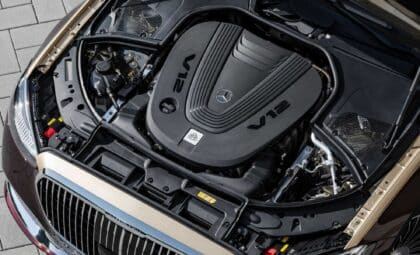
Photo: Chris Waits via CC
If you’re reading this article, hopefully it’s not because your car has been damaged by excessive rain or flooding. And hopefully it’s not because you decided to drive through high water. Because water damage is one of the most frustrating and detrimental things that can happen to a car.
Whether you’re reading this article for research or need to know what to do with your water-damaged vehicle, hopefully this will guide you through your panic and get your car running again.
Need to Clean Your Car’s Upholstery? Tips for effectively cleaning your vehicle’s interior
Steps to take to dry a water-damaged car
If you notice that your car has recently received water damage (you can use this handy guide to determine if this is the case), be very careful what your first actions are. Do not try to start the car! Running the engine will only cause further damage at this point. Have patience and let the car dry out first.
If you can safely reach the car and the water has subsided, Popular Mechanics advises you to start drying the vehicle to prevent the spread of mildew inside. Open all the doors, the trunk, and the hood, using a wet vac to remove any standing water.
Grab some household tools like a cordless wrench and remove all the mats and seats. Dry the interior by laying towels down and wiping in all the crevices. Position fans on one side of your car and let them blow through the cabin for at least one day. If the upholstery still feels damp, sprinkle baking soda on it to absorb any remaining moisture, which you can then vacuum up.
If you can’t reach your car because it’s partially submerged in water, leave it until the water subsides or you’re able to haul it to safer ground. Don’t try to enter the car or start the engine to move it. If the water has risen to the dashboard, there’s no point in worrying about the vehicle now; your insurance company will probably consider it totaled because of the flooded electronic components.
Prevent Car Problems: Read this advice for properly maintaining a car battery
What to do next
Progressive Insurance recommends you call your insurance company to determine what your next step should be. There’s a chance that your auto policy covers water or flood damage, so consult your agent. You might want to consider having the vehicle deemed totaled and scrap it, or else paying to repair the vehicle might cost you even more.
If the water damage isn’t as bad — you just left your windows open during a rainstorm — check the fluid levels, including the oil and transmission, and see if the fluids are abnormally high or transparent. If everything looks good — the electrical systems work and there’s no body damage — you can try starting the car once it’s dry.
Otherwise, you’ll probably need to get your car towed to a local garage for work to be done on it: flushing the fluids, professionally cleaning it, replacing the spark plugs and filters, etc.
If you’re not sure what to do, still have the car towed to get a mechanic’s advice.

Aaron is unashamed to be a native Clevelander and the proud driver of a Hyundai Veloster Turbo (which recently replaced his 1995 Saturn SC-2). He gleefully utilizes his background in theater, literature, and communication to dramatically recite his own articles to nearby youth. Mr. Widmar happily resides in Dayton, Ohio with his magnificent wife, Vicki, but is often on the road with her exploring new destinations. Aaron has high aspirations for his writing career but often gets distracted pondering the profound nature of the human condition and forgets what he was writing… See more articles by Aaron.









